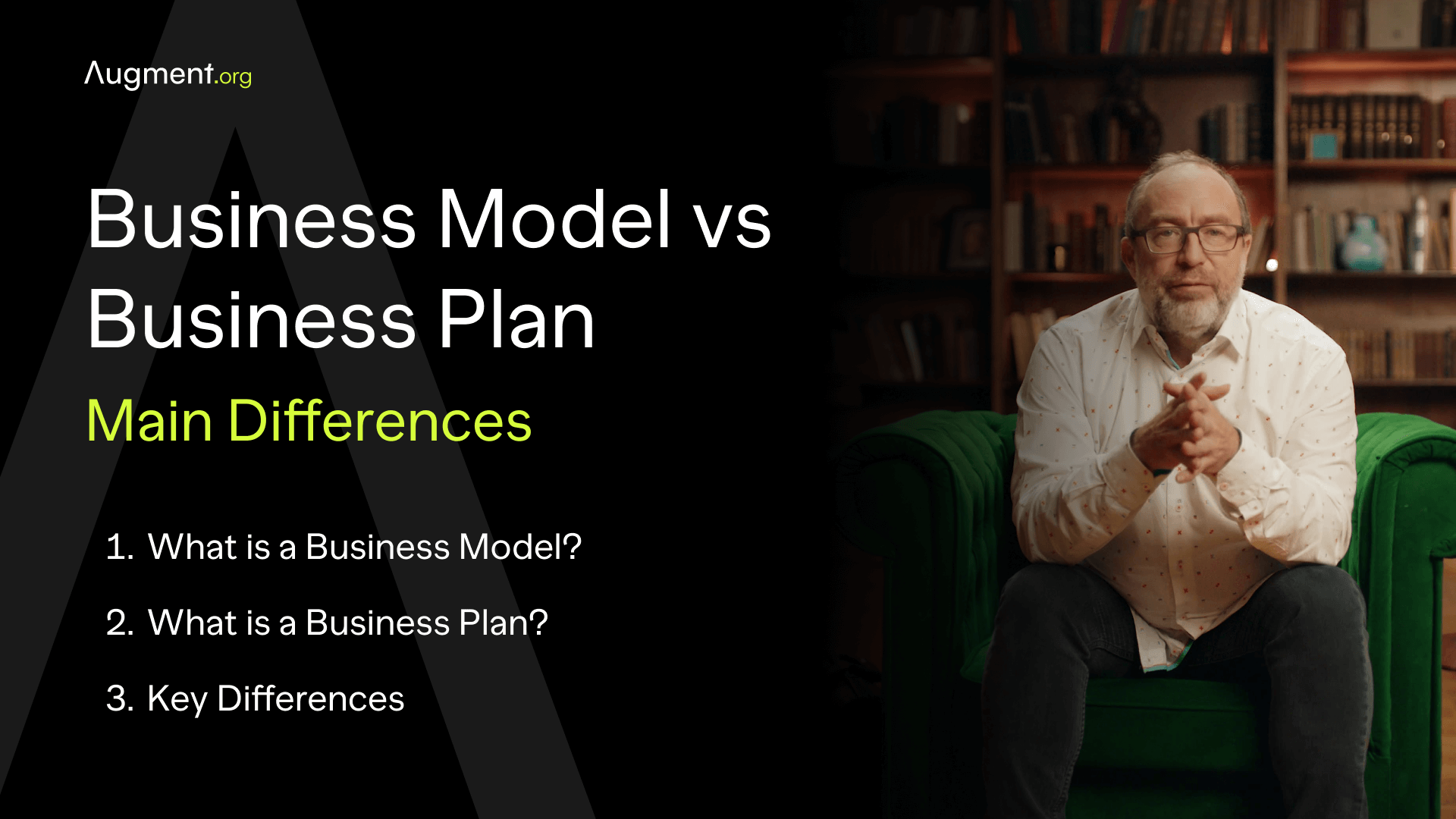Business Model vs Business Plan: Main Differences
Distinguishing business models from plans is crucial for success. Models outline value creation and profit generation, while plans detail strategies, research, and projections. Together, they form the blueprint for long-term success and operational execution.

What is a Business Model?
A business model is the backbone of any company, detailing the plan for how it intends to operate, generate revenue, and make a profit. It's less about the nitty-gritty details found in a business plan and more about the overall concept of how the business creates value for customers and captures value for itself. Essentially, a company's business model describes the way the company sells its products or services and how it establishes and maintains customer relationships to achieve financial success.
At its core, a business model involves identifying the value proposition of the company, which is what makes its products or services attractive to customers. It also outlines the customer segments targeted, the key activities and resources needed to operate, and the channels through which it reaches its customer base. Importantly, it details the revenue streams the business will pursue to generate income and the cost structure that outlines the expenses involved.
What is a Business Plan?
A business plan is a detailed roadmap for building a successful business. Unlike the broader strokes of a business model that describes how a company creates and delivers value, business plans are a comprehensive document that outlines the specifics of business strategy. They serve as a guide to what the business intends to do and how it plans to do it and are often used to attract investors and secure financing.
The heart of a business plan includes an executive summary, which is a snapshot of the business and its plans for success. This section briefly explains the business idea, key objectives, and how the business will achieve its goals. It's followed by detailed sections that outline the business's structure, market analysis, value proposition, marketing and sales strategies, financial projections, and more.
Key components of a business plan include the business model canvas, which lays out the key resources and activities needed to operate the business. It also delves into the cost structure, detailing all the expenses the business will face. A thorough market analysis assesses the existing market, target customers, and competitive landscape. This helps in formulating a solid marketing strategy and establishing a unique value proposition that sets the business apart from its competitors.
Financial planning is also crucial, with sections dedicated to expected financial performance, revenue generation, and a detailed financial forecast. This helps potential investors and business owners understand the financial viability and growth potential of the business.
Types of Business Models
There are many types of business models, each defining a unique way a company creates value for its customers and generates profits. Understanding different business models helps owners and entrepreneurs select the right approach for their business concept and target market. Here are some common business models:
- Subscription Services: This model offers customers regular, ongoing access to products or services in exchange for a recurring fee. Popular among digital services and software, it provides steady revenue and customer loyalty.
- Freemium Model: Common in the tech industry, the freemium model offers basic services for free while charging for advanced features. It attracts a large user base quickly, with the potential to convert a portion to paid versions.
- Product Sales: This traditional model involves selling goods directly to customers. It can range from retail operations to online stores, focusing on producing, marketing, and selling physical items.
- Service-Based Model: Professional firms and contractors often use this model, providing specialized services like consulting, design, or maintenance. Success relies on expertise, customer service, and reputation.
- On-Demand Model: Popularized by companies like Uber, this model provides goods or services directly on customer request, often facilitated through a digital platform or app.
- E-commerce: With the rise of the internet, many businesses operate online, selling products or services directly through their website or online marketplaces.
- Affiliate Marketing: This model pays external parties to generate traffic or leads to the company's products and services. It's a way to extend market reach without directly handling sales.
- Advertising Model: Media companies and websites often use this model, providing content or services free of charge, but generating revenue through advertisements.
Understanding these business models helps a company decide the best strategy for market entry and growth. Each model has its own set of operational details, target market strategies, and financial implications. Selecting the right business model is crucial for a company's success, aligning with its core values, customer needs, and long-term goals. As the business evolves, it may adopt multiple models or shift strategies to adapt to changing market conditions or customer feedback.
Business Model vs Business Plan: Key Differences
Understanding the difference between a business model and a business plan is crucial for anyone diving into the world of entrepreneurship or looking to scale their business. Here are the key differences:
- Definition and Purpose:
- Business Model: A business model is an overarching concept that explains how a company creates, delivers, and captures value. It's about the company's core strategy for generating profits and includes elements like value propositions, customer segments, and revenue streams.
- Business Plan: A business plan is a detailed document that outlines the specific strategies, goals, and actions of a business. It's a comprehensive plan that includes market analysis, financial projections, and operational details aimed at guiding the business's trajectory and attracting investors.
- Scope and Detail:
- Business Model: Generally broader and more conceptual, a business model provides a high-level view of the business's approach to the market. It's about the fundamental structure of how the business operates and competes.
- Business Plan: More detailed and tactical, a business plan lays out the step-by-step plan for executing the business model. It includes in-depth information on planning, marketing, finances, and more.
- Flexibility and Evolution:
- Business Model: Business models often need to be flexible and adaptive, especially in early stages or in rapidly changing markets. They can evolve as the business learns more about its customers and competition.
- Business Plan: While it's a detailed guide, the business plan is also a living document but typically requires formal revisions and updates as the business grows and market conditions change.
- Audience:
- Business Model: Primarily used internally to guide the company's strategy, but it can also be used to succinctly explain the business to external stakeholders and potential partners.
- Business Plan: Often intended for external stakeholders, especially potential investors, lenders, or partners who want a detailed understanding of the business's approach and potential for success.
- Components:
- Business Model: Includes the business model canvas or similar frameworks detailing the company's value proposition, customer segments, channels, customer relationships, revenue streams, key activities, key resources, key partners, and cost structure.
- Business Plan: Includes an executive summary, company description, market analysis, organization and management structure, product or service line, marketing and sales strategy, funding request, financial projections, and appendices.
While a business model provides a conceptual framework for understanding how the company creates value and money, the business plan offers a detailed guide on how to implement these concepts and achieve specific business goals. Both are vital, but they serve different purposes and address different needs within the business's lifecycle.



